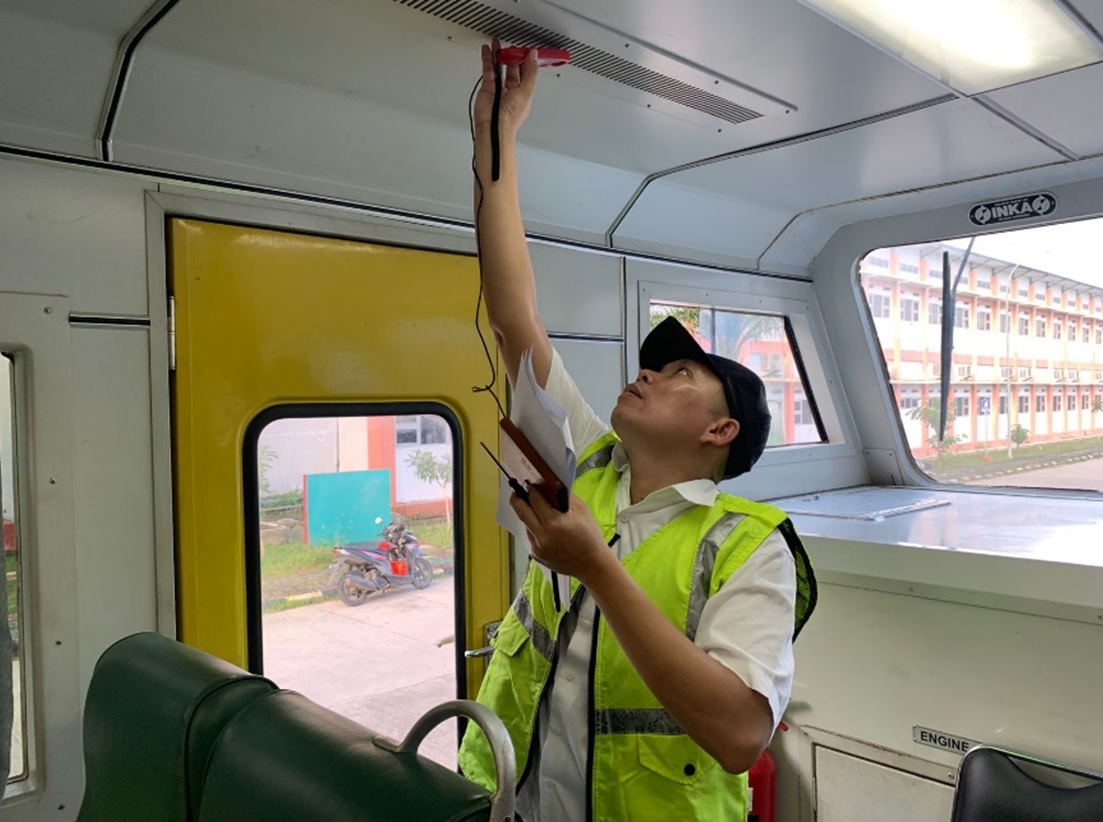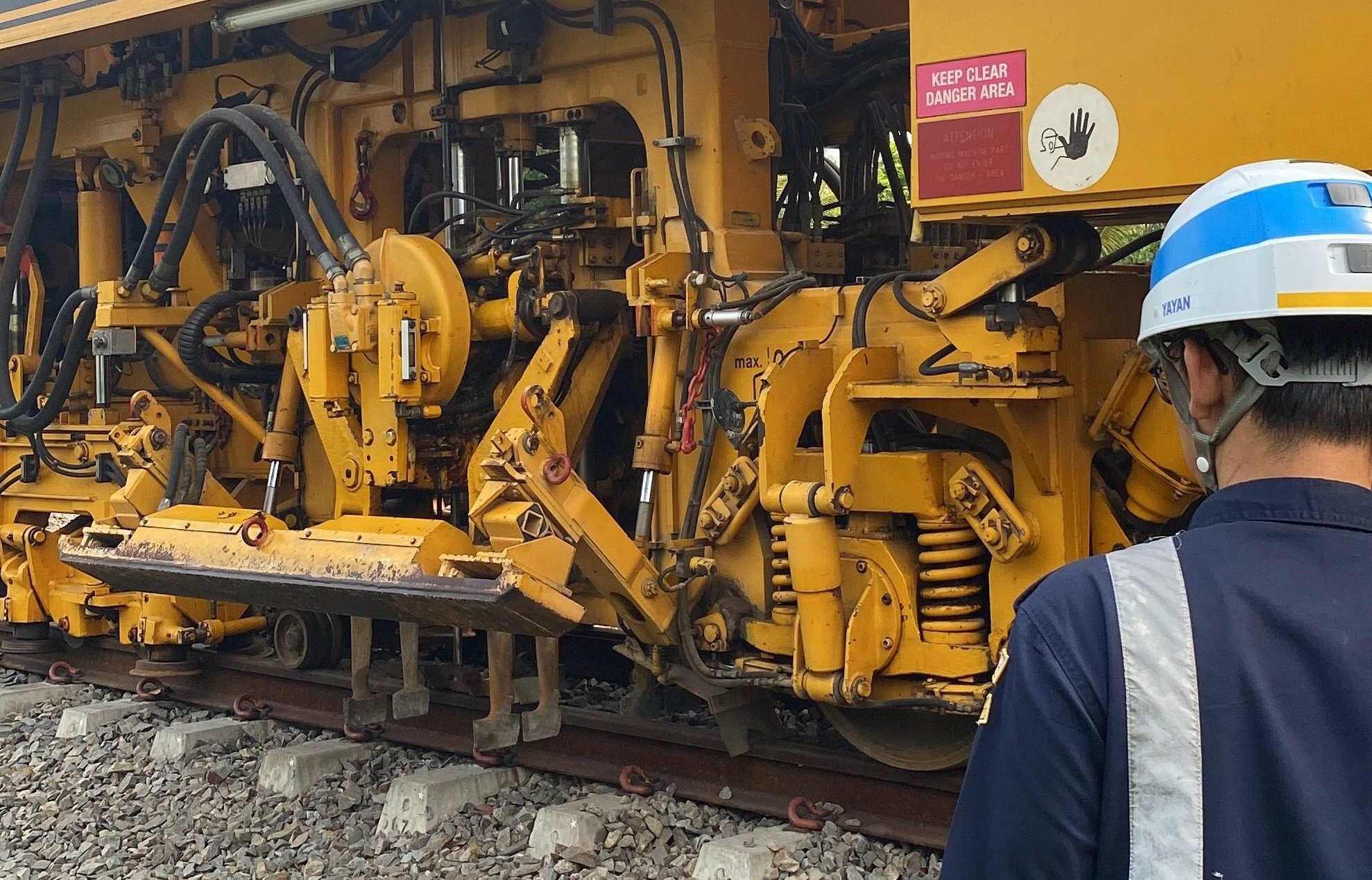Testing of Self-Propelled Trains

It should be noted that every type of railway facility operating on the crossing is required to meet standards for the feasibility of operating railway facilities. Apart from maintenance, so that railway facilities always meet and comply with operational fitness standards, each facility must also be tested. Testing of railway facilities is carried out by comparing the physical condition and function of the facilities with the technical requirements and technical specifications of the related facilities whether they are appropriate or not.
Testing of self-propelled trains is regulated in Minister of Transportation Regulation Number 49 of 2023 concerning Standards, Testing Procedures and Certification of the Worthiness of Self-Propelled Normal Speed Trains, after the previous regulation, Minister of Transportation Regulation Number 13 of 2011 was revoked.
Based on these regulations, self-propelled trains are divided into 2 types, namely KRD (Diesel Rail Train) and KRL (Electric Rail Train). KRD (Diesel Rail Train) is divided into 2 types, namely KRDH (Hydraulic Diesel Rail Train) and KRDE (Electric Diesel Rail Train). KRL type trains are divided into 2, namely non-automatic KRL and automatic KRL.
Tests on self-propelled trains consist of first tests and periodic tests. The first test on the self-propelled train consisted of design and engineering tests, static tests and dynamic tests. Periodic testing consists of annual periodic tests and complete periodic tests, each of which consists of static tests and dynamic tests.
The first test is carried out when new facilities have been produced or facilities have undergone changes in technical specifications, while periodic tests are carried out on facilities that have been operated.
Especially for KRL, integration tests are carried out. This integration test is adapted to the level of automation system control (GoA 1,2,3 or 4) on self-driving trains.
In the design and engineering tests, the facilities will be evaluated for documents and endurance tests. Document evaluation is carried out to determine the suitability between the design and engineering documents and the physical railway facilities. Endurance testing is a testing activity to determine the function and performance of all systems and equipment at the facility dynamically without any failure in the system and equipment at the facility.
Components tested in the document evaluation of self-propelled trains include base frame, body, bogies, obstacle removal equipment, passenger compartment, driver's cabin, coupling equipment, braking equipment, safety systems and equipment, power transmission equipment, propulsion equipment, control equipment , auxiliary power supplies, and supporting equipment.
The durability test functions to determine the function and performance of the facility dynamically until it reaches a certain kilometer traveled without any major/minor failure. The facility will be operated for 4000 km for the first product or 2000 km for the follow-up product. If there is a failure in the system, retesting is carried out from 0 km. If a minor failure occurs, testing is temporarily stopped for evaluation and repair, then testing can be carried out from the last km.
After design and engineering tests are carried out, the facilities are subjected to static tests and dynamic tests. Static tests are carried out to determine the condition of the equipment and the working capacity of the self-propelled train when it is not moving. Components tested in the static test include dimensions, static weight difference ratio of wheels, braking, cracking, air circulation, temperature, electricity, noise, light intensity, communication equipment, leaks, exhaust emissions, loading, and horn, while the components tested in dynamic tests, including facility boundary space and length of pneumatic hoses and cables, braking, bearing temperature, ride quality/ride index, loading/tensile capability, acceleration, electricity and noise.
Furthermore, for self-propelled trains that have been operated, annual periodic tests and complete periodic tests must be carried out periodically. Each test consists of a static test and a dynamic test.
Annual periodic static tests include dimensional tests, braking tests, crack tests, air circulation tests, temperature tests, electrical tests, noise tests, light intensity tests, communication equipment tests, loading tests, and horn tests, while complete periodic static tests are the same as tests annual static and equipped with static wheel weight difference ratio tests, leak tests and exhaust emissions tests.
The annual periodic dynamic test includes braking test, bearing temperature test, ride quality/ride index test, load/tensile capability test, acceleration test, and noise test, while the complete periodic dynamic test is almost the same as the annual periodic dynamic test and is equipped with a means limit space test. and length of pneumatic hoses and cables, and electrical tests.
Railway facilities that undergo regular testing must have a history of maintenance and inspection documents. Therefore, the maintenance process must ensure that the tested components are in a condition that meets standards and is suitable for operation. (hamid)






.jpg)



Komentar
LOGIN FOR COMMENT Sign in with Google